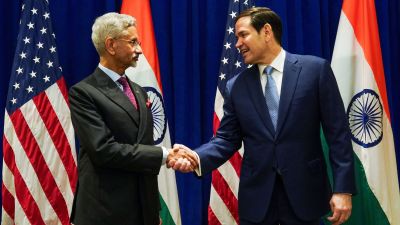Confusions of a green signal
It is heartening to note that the current Environmental Clearance procedure (EC) is being reviewed by the Ministry of Environment and Forest...

It is heartening to note that the current Environmental Clearance procedure (EC) is being reviewed by the Ministry of Environment and Forests (MoEF). The alleged transfer of power to states for granting EC to some of the industries has come in for close scrutiny by experts.
Adoption of a well laid down scientific basis for the EC is the foremost among all issues. EC is required only for a few industrial activities, if they are named in the Schedule appended to EIA Notification of 1994. According to the current norms, the project proponent is required to seek clearance from MoEF by applying with the Environmental Impact Assessment (EIA) report, Environmental Management Plan (EMP) and details of the public hearing. There are multiple rules overlapping one another, making the entire gamut of regulations complex.
After the promulgation of the EIA notification in 1994, several changes have been effected piecemeal. But there are many other factors adding to this confusion.
The exemption granted to projects costing less than Rs 50 crore also lacks a scientific basis. More often it is harmful rather than benign to the environment. Hence irrespective of initial investment, the effect upon the environment should be the sole criteria. Further, complex regulations of this kind will increase the confusion and create enforcement challenges. The role of institutions involved in EC is not clear and unfortunately, not much attention is paid to this issue.
The discussion on the role of institutions is important in the light of the present revamping by the MoEF. Presently, the MoEF is overall in-charge of granting clearance. Comprehensive guidelines as to the methodologies of conducting proper EIA is also a long standing commitment from the Ministry. The MoEF ideally, should be providing all relevant baseline data for the assessor to evaluate the impact upon the environment. Only upon such an edifice can a strong meaningful superstructure of EC be built. Otherwise, as it is happening now, the entire process of EIA is very expensive, and project proponents seek exemption when their investment is too low (like less than Rs 50 crore etc).
Validation of models of assessment, issuance of clear guidelines, comprehensive Strategic Impact Assessment for prior declaration of suitable sites for industrial development are some of the deeds which the Ministry can take up immediately to strengthen the process. The Impact Assessment Agency (IAA), which is an integral wing of the Ministry, is supposed to evaluate the EIA reports before recommending the approvals. They can also consult the Expert Committee constituted for stipulation of certain guidelines to be followed by the project proponent. Unfortunately, the IAA lacks proper infrastructure to handle such an important responsibility.
Somehow the feeling of State Pollution Control Boards is that they have absolutely no role to play. Just conferring some power of EC to states in some cases will not do. Before such conferment, capacity building at the state level is necessary, without which the devolution will do more harm than good. Two specific suggestions are that pollution control boards of different states should join hands and improve information and technology sharing; and that they should take over the job and provide for mechanisms to collect baseline data within their state limits.
Environmental consultants are another key player in environmental clearance. Unfortunately anybody can act as an environmental consultant under the present legal regime. Having no qualifications prescribed for environmental consultants may cast serious doubts on the veracity and accuracy of the EIA, and may eventually lead to environmental damage.
Strengthening public participation in the entire EC process is also very necessary at all levels (as public hearing is being dropped in some instances). Post-project monitoring, which is very weak under the resent regime requires some strengthening as well.
A well-balanced and executed environment clearance process is additionally required. The hope is that the Ministry will work in this direction.
The writer is Assistant Professor, National Law School of India University, Bangalore
Photos


- 01
- 02
- 03
- 04
- 05





























